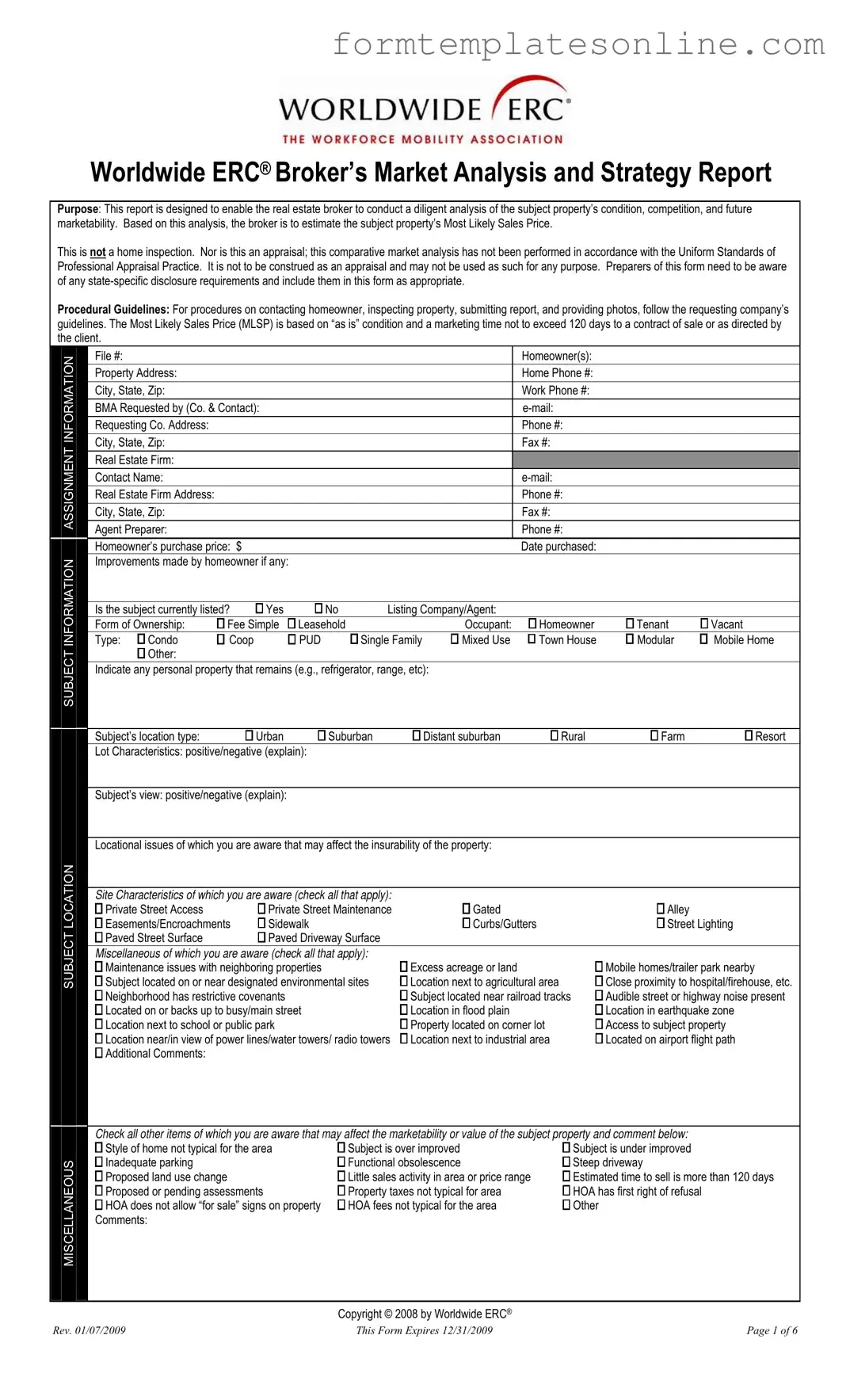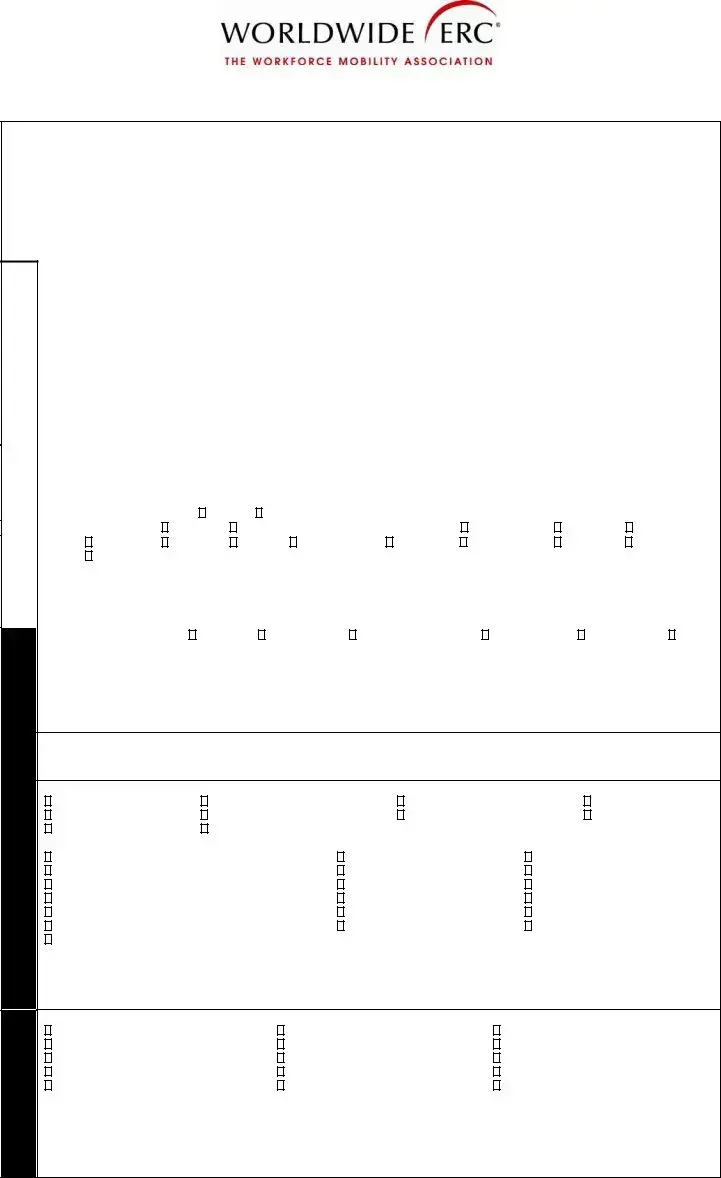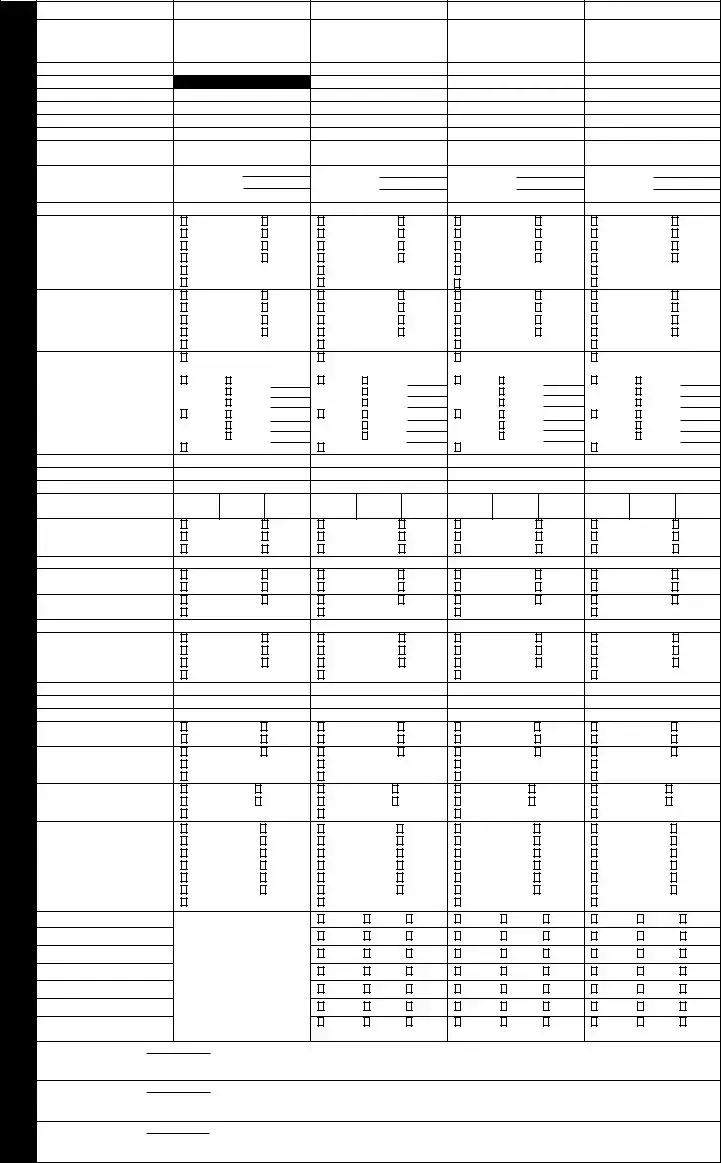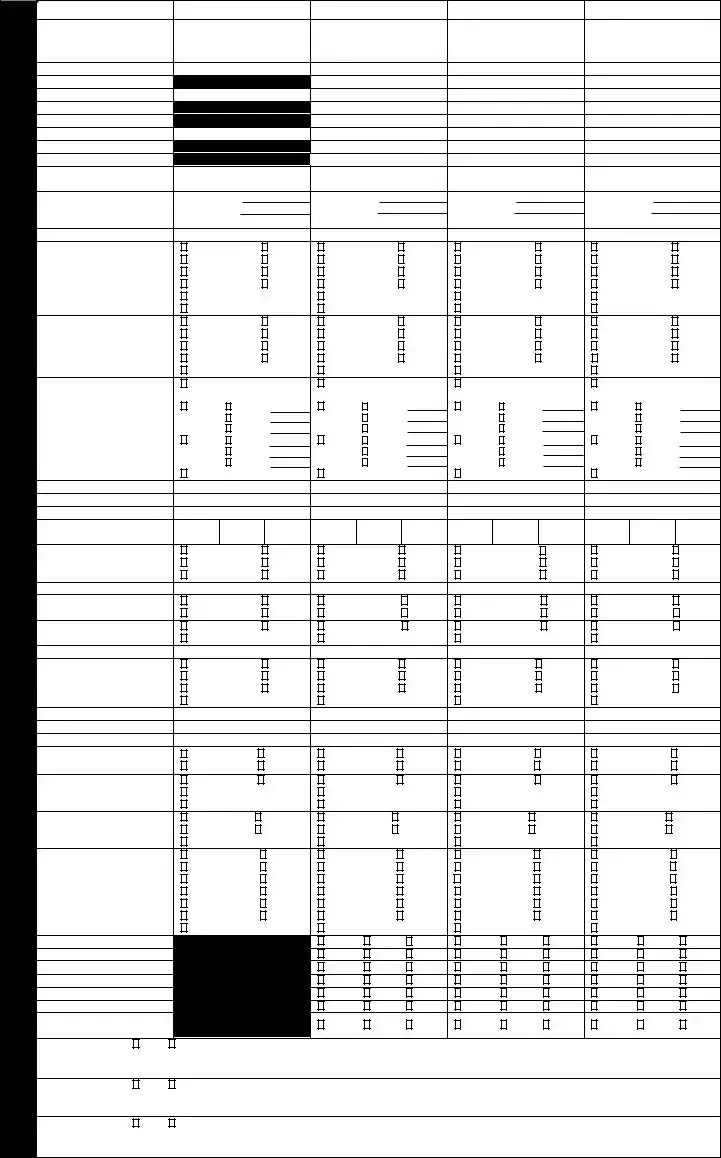What is the purpose of the ERC Broker Market Analysis form?
The ERC Broker Market Analysis form serves as a tool for real estate brokers to evaluate a property’s condition, assess competition, and determine its future marketability. By conducting a thorough analysis, brokers can estimate the Most Likely Sales Price (MLSP) for the property. It is important to note that this form is not intended to serve as a home inspection or an appraisal, and it does not adhere to the Uniform Standards of Professional Appraisal Practice.
What information is required to complete the form?
To complete the ERC Broker Market Analysis form, several key pieces of information are needed. This includes the homeowner's details, property address, and contact information for both the homeowner and the requesting company. Additionally, the form requires details about the property itself, such as its condition, any improvements made, and whether it is currently listed for sale. Brokers must also provide insights into the local market, including comparable listings and sales data.
How does the form help in estimating the Most Likely Sales Price?
The form guides brokers through a structured analysis that takes into account various factors affecting the property’s value. By evaluating the property’s condition, location, and market trends, brokers can arrive at a well-informed estimate of the Most Likely Sales Price. This estimate is based on the property’s "as is" condition and assumes a marketing time not exceeding 120 days, unless otherwise directed by the client.
Are there any specific guidelines for using the form?
Yes, there are procedural guidelines that must be followed when using the ERC Broker Market Analysis form. Brokers should adhere to the requesting company’s protocols for contacting homeowners, inspecting properties, and submitting reports. Additionally, state-specific disclosure requirements should be considered and included in the analysis as needed. Following these guidelines ensures that the analysis is thorough and compliant with local regulations.
What should be included in the analysis of competing properties?
When analyzing competing properties, brokers should gather information on recent sales within the same market area. This includes details such as original list prices, final list prices, sales prices, and days on the market. It is also important to assess the features and conditions of these properties in comparison to the subject property. This comparative analysis helps brokers understand the competitive landscape and make more accurate pricing recommendations.






